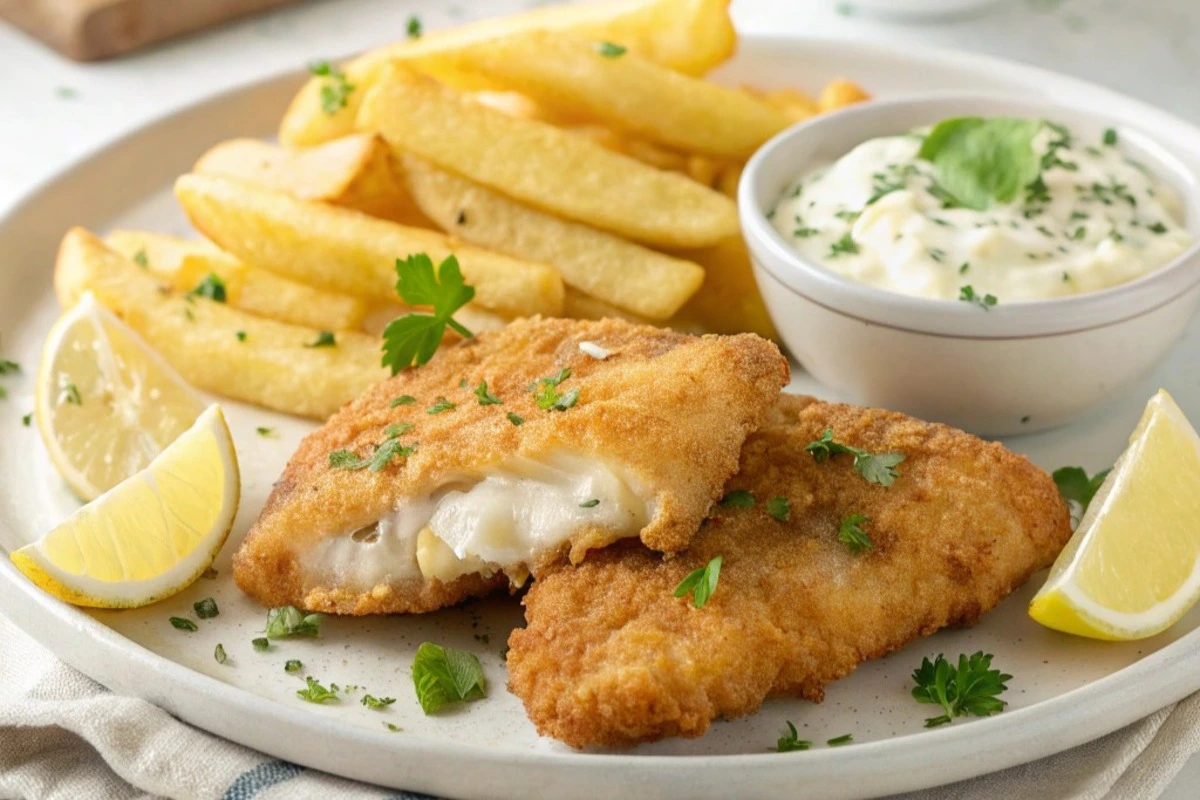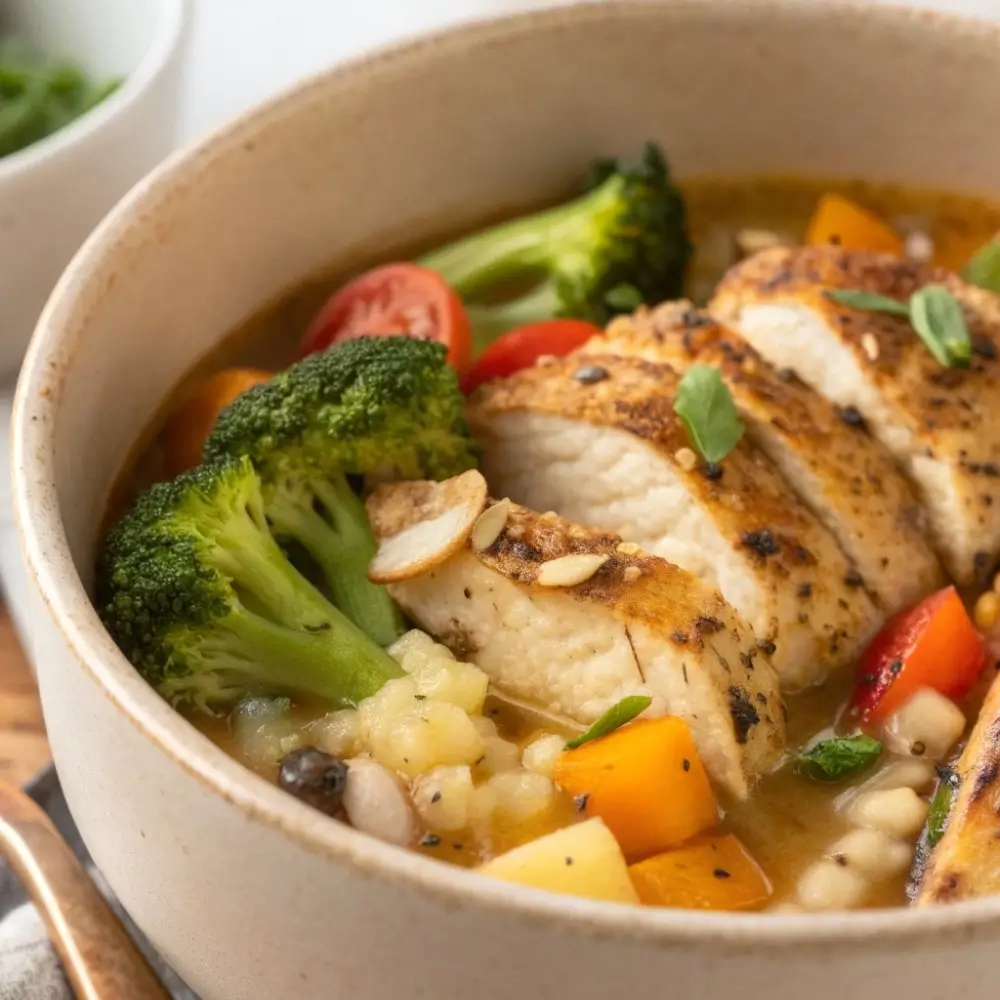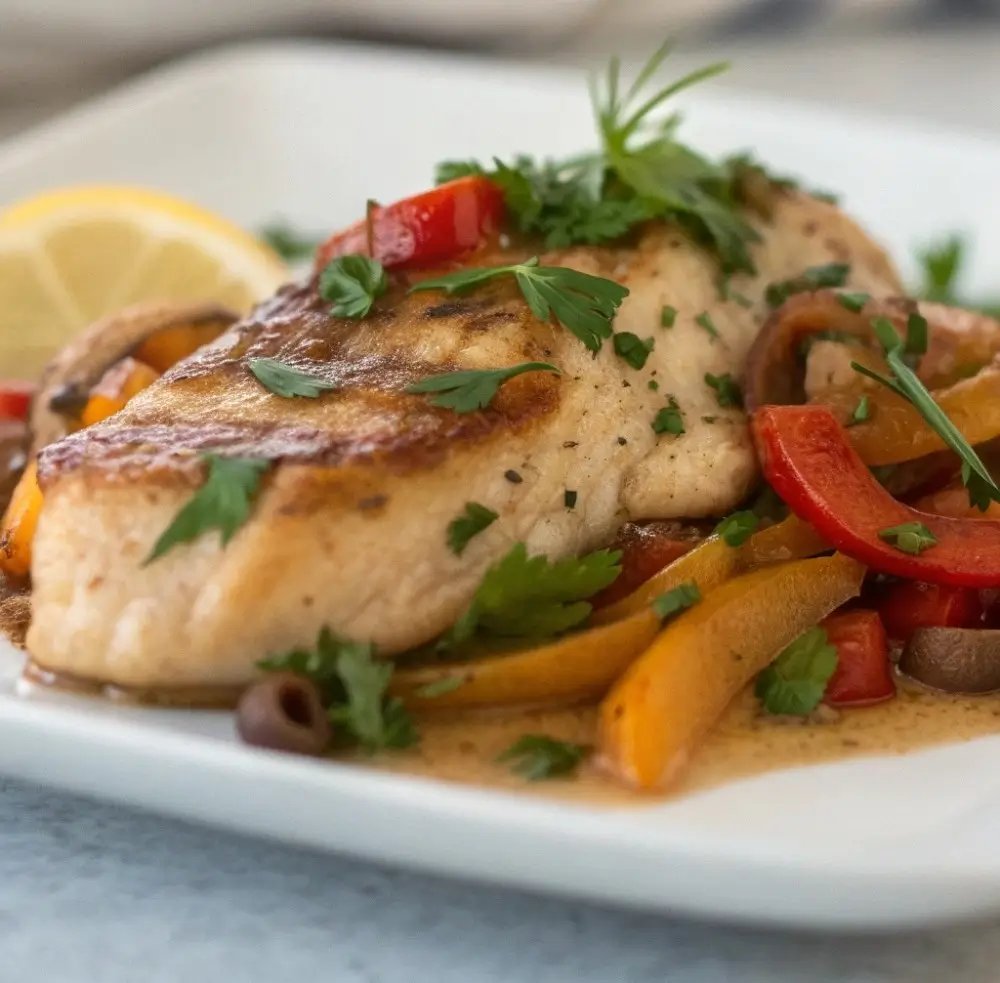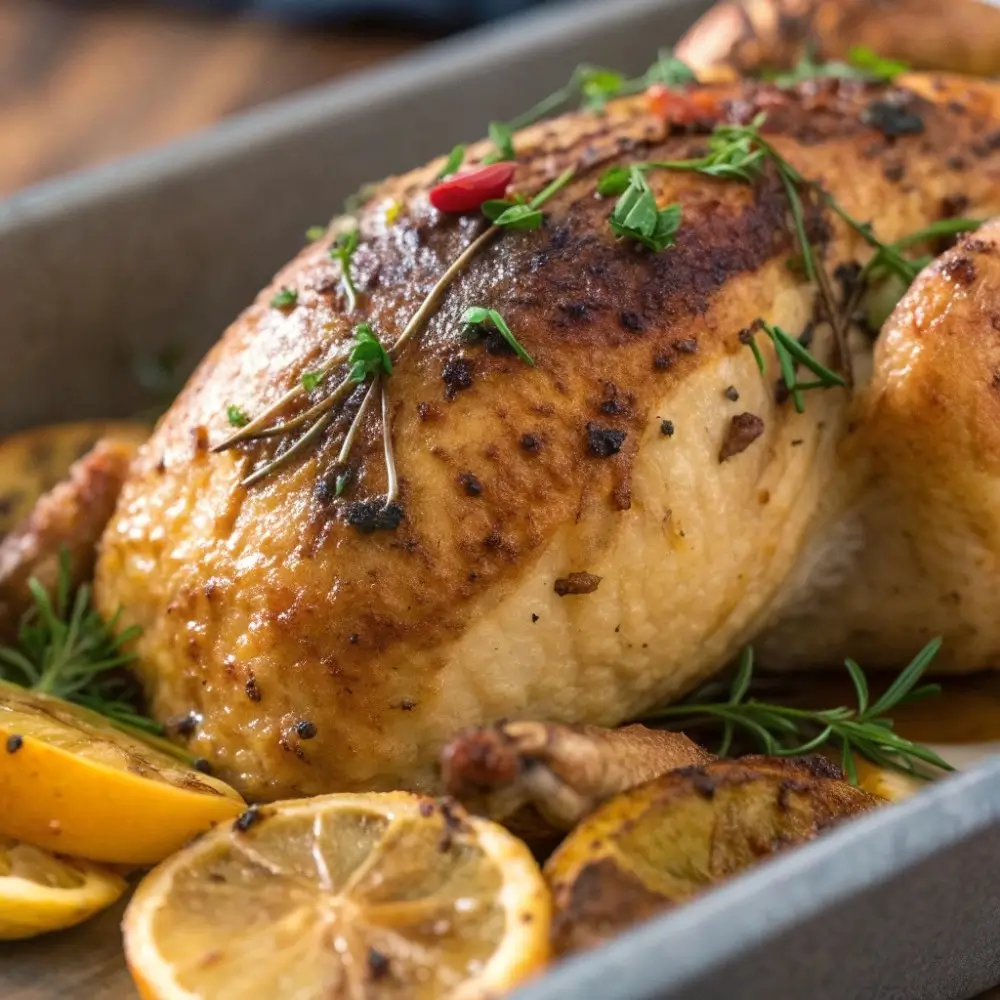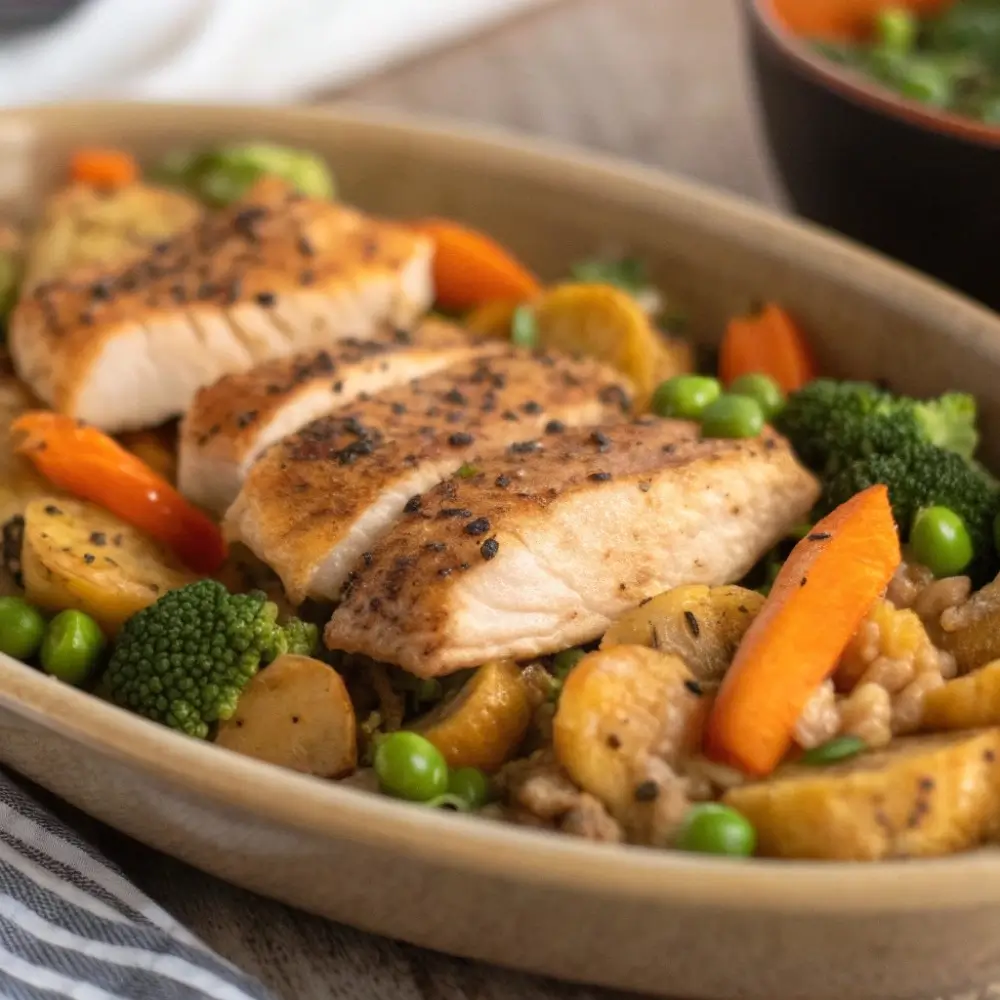Table of Contents
- 1 What is a Lectin-Free Diet?
- 2 Lectin-Free Fish and Chips – Ingredients and Substitutes
- 3 Step-by-Step Guide to Making Lectin-Free Fish and Chips
- 4 Variations of the Lectin Free Fish and Chips Recipe
- 5 Health Benefits of Lectin-Free Fish and Chips
- 6 Tips for Perfecting Your Lectin Free Fish and Chips Recipe
- 7 Variations and Substitutes for Lectin-Free Fish and Chips
- 8 Frequently Asked Questions
If you’re following a lectin-free diet, you may have thought that enjoying crispy fish and chips was off-limits. But fear not! We’ve got a recipe that will satisfy your cravings while keeping your gut health in check. A lectin free fish and chips recipe is not only possible, but it can also be delicious, nutritious, and easy to make at home.
In this article, we’ll dive into how to prepare the perfect lectin-free fish and chips that offers all the crispy, golden goodness of the classic dish—without the unwanted lectins. From choosing the right fish to finding the best flour substitutes for the crispy batter, you’ll learn how to make this dish while sticking to your lectin-free lifestyle.
Let’s start by understanding what lectins are and why it’s essential to avoid them in some diets.
What is a Lectin-Free Diet?
Understanding Lectins and Their Effects on Health
Lectins are a type of protein found in many foods, particularly in legumes, grains, and certain vegetables. While lectins are not inherently harmful to everyone, they can cause issues for individuals with sensitive digestive systems or autoimmune conditions. They’re known to bind to carbohydrates and can interfere with nutrient absorption and digestive health.
In some people, consuming foods with high lectin content can lead to stomach discomfort, bloating, and more severe symptoms like leaky gut syndrome. This is why following a lectin-free diet can be beneficial for those who experience these types of issues.
But, does that mean you have to give up all your favorite foods? Not at all! By making a few simple substitutions, you can continue enjoying flavorful, nutritious meals without lectins causing havoc in your system.
Why Choose a Lectin-Free Diet?
So, why would someone choose to follow a lectin-free diet? For many, it’s not just a trend; it’s a way to manage chronic health conditions or sensitivities. Here are a few reasons why someone might opt for a lectin-free lifestyle:
- Digestive Health: Lectins can sometimes irritate the gut, leading to discomfort, bloating, or poor digestion. By cutting out high-lectin foods, many find relief from these issues.
- Autoimmune Conditions: People with autoimmune disorders like rheumatoid arthritis or lupus might benefit from a lectin-free diet. Lectins can exacerbate inflammation in some individuals, leading to flare-ups.
- Better Absorption of Nutrients: Since lectins can block the absorption of certain nutrients, eliminating them can improve overall nutrient absorption.
Common Foods to Avoid on a Lectin-Free Diet
To ensure a lectin-free lifestyle, it’s important to know which foods to avoid. Some common high-lectin foods include:
- Legumes: Beans, lentils, and peanuts are all packed with lectins.
- Grains: Wheat, rice, and quinoa.
- Nightshades: Tomatoes, eggplants, peppers, and potatoes.
- Dairy: While not a high-lectin food, many dairy products can be problematic for those with digestive sensitivities.
But don’t worry! You can still enjoy a wide range of delicious and nutritious foods that are naturally low in lectins, and we’re here to show you how to make that happen in this fish and chips recipe!
Can You Enjoy Delicious Foods on a Lectin-Free Diet?
The short answer is YES! You can still savor flavorful, satisfying meals like lectin-free fish and chips. By swapping out regular flour for almond flour or coconut flour, and frying in healthy oils like avocado oil or coconut oil, you can create a healthier version of the classic dish while staying true to your dietary needs.
Lectin-Free Fish and Chips – Ingredients and Substitutes
Ingredients for Lectin-Free Fish and Chips
To create a lectin-free fish and chips recipe, you’ll need to carefully select your ingredients. But don’t worry—many of the ingredients used in this dish are easily accessible and simple to work with! Let’s break it down.
Lectin-Free Fish Selection
The first step to making great fish and chips is choosing the right fish. You’ll want a type of fish that is mild in flavor, firm enough to hold up to frying, and works well with your breading. Some great options for a lectin-free fish and chips recipe include:
- Cod: A popular choice for fish and chips, cod is mild and flaky, making it perfect for crispy batter.
- Haddock: Another excellent option, haddock has a firm texture that crisps up beautifully.
- Tilapia: If you’re looking for something a bit lighter, tilapia is an affordable choice with a mild flavor.
You can also use other white fish, such as pollock or even catfish. Just be sure to choose fresh, skinless fillets for best results.
Lectin-Free Flour Substitutes for Breading
Traditional breading for fish and chips typically uses all-purpose flour, but on a lectin-free diet, that’s out of the question. No worries, though—there are great alternatives that will give you a crispy, golden crust.
Here are some options:
- Almond Flour: This is a popular choice for low-carb and lectin-free diets. It has a slightly nutty flavor and provides a crispy texture when fried.
- Coconut Flour: Coconut flour is another excellent choice. It’s very absorbent, so you’ll need less of it compared to almond flour. It also adds a slight sweetness to your fish.
- Chickpea Flour: While chickpeas are usually avoided on a strict lectin-free diet, chickpea flour (also known as besan) is lower in lectins and can work wonderfully as a breading.
Lectin-Free Oils for Frying
For frying your fish, it’s important to choose oils that are both lectin-free and healthy. Here are some great options for getting that crispy texture without introducing lectins:
- Coconut Oil: Known for its high smoke point and mild flavor, coconut oil is perfect for frying fish. It’s also lectin-free and provides healthy fats.
- Avocado Oil: Another great oil for high-heat cooking, avocado oil offers a neutral flavor and is packed with heart-healthy fats.
- Ghee: Ghee, or clarified butter, is another excellent choice. It’s lactose-free and lectin-free, giving your fish a rich, buttery taste.
Key Ingredients Breakdown
Let’s break down the rest of the ingredients for this lectin-free fish and chips recipe:
- Fish Fillets: Select your preferred fish (cod, haddock, tilapia, etc.), ensuring it’s fresh and firm.
- Potatoes: To make the chips, you’ll need good-quality potatoes. Opt for Russet potatoes, as they’re starchy and create crispy chips when fried.
- Seasoning: For the batter and chips, season with salt, pepper, and your choice of herbs. You can use garlic powder, onion powder, and paprika for a little extra flavor.
- Lemon: A fresh squeeze of lemon over the fish adds brightness and complements the savory flavors perfectly.
Step-by-Step Guide to Making Lectin-Free Fish and Chips
Preparing the Fish
Now that we’ve covered the ingredients, it’s time to get cooking! Here’s how to prepare the fish for your lectin-free fish and chips.
- Start by preparing your fish fillets. If you’re using frozen fish, be sure to thaw it properly. Pat the fillets dry with paper towels to remove excess moisture—this will help the batter stick better.
- Season the fish with salt and pepper, ensuring an even coating. You can also add a pinch of garlic powder or paprika for additional flavor. The seasoning helps enhance the natural taste of the fish.
- Set up your breading station. In one bowl, place your chosen lectin-free flour (almond flour, coconut flour, or chickpea flour). In another bowl, beat an egg with a little water to create an egg wash. The egg wash will help the flour adhere to the fish.
- Coat each fillet by dipping it first into the egg wash, then rolling it in the flour mixture. Make sure to coat the fish evenly on both sides. For an extra crispy coating, you can double coat the fillets by repeating this process.
Making the Perfect Lectin-Free Breading
Creating the perfect breading is key to getting that crispy, golden exterior. Here’s how to do it:
- Use a light hand when breading the fish. You want a thin, crisp layer, not a thick, doughy coating.
- Optional: For extra crunch, you can add a tablespoon of parmesan cheese to your flour mix. This is a great way to add richness and depth of flavor to the breading.
- Ensure your oil is hot enough (around 350°F or 175°C). If the oil is too cool, the fish will absorb excess oil and become greasy rather than crispy.
Frying the Fish
Now that the fish is prepped and breaded, it’s time to fry! Here’s how to fry your fish to crispy perfection:
- Heat your frying oil in a deep pan or skillet over medium-high heat. Make sure the oil is deep enough to fully submerge the fish.
- Gently lower the fish fillets into the hot oil. Fry for about 4-5 minutes per side, depending on the thickness of your fish. Flip the fish carefully to avoid breaking the coating.
- Remove the fish once it’s golden and crispy, and place it on a plate lined with paper towels to drain any excess oil.
Making the Chips
Now, let’s move on to the chips! Here’s how to make them:
- Peel and cut the potatoes into even strips. Soak them in cold water for at least 30 minutes to remove excess starch. This will help them crisp up better.
- Pat the potatoes dry thoroughly with a towel to avoid splattering when frying.
- Fry the chips in the same oil as the fish, ensuring the oil temperature stays at around 350°F (175°C). Fry the chips for about 5-7 minutes until golden and crispy. You can fry them in batches to avoid overcrowding the pan.
- Season the chips with salt immediately after frying while they’re still hot.
Variations of the Lectin Free Fish and Chips Recipe
While the traditional method of frying fish and chips works great, there are a few variations that you can try for a healthier twist.
Oven-Baked Lectin-Free Fish and Chips
If you prefer to bake rather than fry your fish and chips, you can still achieve crispy, golden results! Here’s how:
- Preheat the oven to 400°F (200°C).
- Place the breaded fish fillets on a parchment-lined baking sheet.
- Bake for 12-15 minutes, flipping halfway through, until the fish is crispy and cooked through.
- Toss the chips with olive oil, salt, and pepper, and bake for 20-25 minutes, flipping halfway through for even crispness.
Air-Fried Lectin-Free Fish and Chips
Air fryers are a great option for a healthier, lectin-free fish and chips recipe. The results are light, crispy, and still packed with flavor:
- Preheat your air fryer to 375°F (190°C).
- Place the breaded fish in a single layer in the air fryer basket.
- Air fry for 10-12 minutes, flipping halfway through for even crispiness.
- For the chips, toss the potatoes with a little oil and air fry for 15-20 minutes, shaking the basket halfway through.
Alternative Seasoning and Sauces
- For a bit of zing, consider making a lectin-free tartar sauce by combining mayonnaise with lemon juice, a dash of mustard, and chopped pickles or capers.
- For extra flavor, drizzle your fish with garlic herb butter or squeeze fresh lemon juice on top before serving.
Health Benefits of Lectin-Free Fish and Chips
The Role of Fish in a Lectin-Free Diet
Fish is an excellent source of lean protein, omega-3 fatty acids, and essential vitamins. Here’s how it benefits your health:
- Omega-3 Fatty Acids: Fish like cod, haddock, and tilapia are rich in omega-3 fatty acids, which help promote heart health by lowering inflammation, reducing the risk of heart disease, and supporting cognitive function.
- Rich in Protein: Fish is an excellent source of high-quality protein, which supports muscle growth, tissue repair, and overall body functions.
- Packed with Essential Nutrients: Fish is also a good source of vitamins such as vitamin D, vitamin B12, and iodine, which support bone health, energy levels, and thyroid function.
The Benefits of Almond and Coconut Flour for Breading
The use of lectin-free flours, such as almond flour and coconut flour, not only makes the dish suitable for those on a lectin-free diet but also provides several health benefits:
- Almond Flour: High in healthy fats, fiber, and vitamin E, almond flour supports heart health and weight management while offering a low-carb alternative to wheat flour.
- Coconut Flour: Packed with fiber and healthy fats, coconut flour helps regulate blood sugar levels, promotes digestive health, and provides a filling, low-carb option.
Both almond flour and coconut flour are low in lectins, making them great alternatives for anyone following a lectin-free diet. Additionally, these flours are gluten-free, making this recipe suitable for those with gluten sensitivities.
The Impact of Healthy Oils in Cooking
The oils used in this recipe, such as coconut oil and avocado oil, offer a number of health benefits:
- Coconut Oil: Rich in medium-chain triglycerides (MCTs), coconut oil helps increase metabolism, supports brain health, and provides anti-inflammatory properties.
- Avocado Oil: High in monounsaturated fats and vitamin E, avocado oil is great for heart health, reducing bad cholesterol, and providing skin benefits.
The Benefits of a Lectin-Free Lifestyle
By eliminating lectins from your diet, you may experience improvements in digestion, reduced inflammation, and better overall health. Lectins, found in many grains and legumes, can sometimes interfere with nutrient absorption and cause digestive issues. By following a lectin-free diet, you can reduce bloating, improve gut health, and support your immune system.
Tips for Perfecting Your Lectin Free Fish and Chips Recipe
How to Achieve the Crispiest Fish and Chips
If you’re aiming for the perfect crispy fish and chips, follow these expert tips:
- Dry the Fish Properly: Before breading, make sure to thoroughly dry the fish fillets with paper towels. This helps the batter stick better and prevents the fish from becoming soggy.
- Ensure Your Oil Is Hot Enough: The key to crispy fish and chips is ensuring the oil is hot enough. Use a thermometer to maintain an oil temperature of about 350°F (175°C). If the oil is too cool, the fish and chips will absorb too much oil and become greasy.
- Don’t Overcrowd the Pan: Fry the fish and chips in batches. Overcrowding the pan reduces the oil temperature and can lead to soggy food. Fry in small batches to maintain that crispy texture.
- Use a Cooling Rack: After frying, place the fish and chips on a cooling rack instead of a plate. This allows air to circulate around the food and helps keep them crispy.
Making the Chips Extra Crispy
For chips that are perfectly crispy on the outside and soft on the inside, follow these tips:
- Soak the Potatoes: Soak your potato strips in cold water for at least 30 minutes to remove excess starch. This step is crucial for getting that golden, crispy texture.
- Double Frying: For extra-crispy chips, try double frying them. Fry the potatoes once, let them rest, and then fry them again for a few minutes until they turn golden brown.
- Season Immediately: As soon as the chips come out of the oil, season them with salt. This ensures that the seasoning sticks while the chips are still hot.
Variations and Substitutes for Lectin-Free Fish and Chips
Making It Low-Carb: Keto Fish and Chips
If you’re following a keto diet in addition to being lectin-free, you’re in luck! This recipe is easy to modify for a keto-friendly version.
- Replace Potatoes with Zucchini Fries: Zucchini is a great low-carb substitute for potatoes. Simply slice zucchini into fries, season with salt and pepper, and bake or air-fry them.
- Use a Low-Carb Flour: For breading, stick to almond flour or coconut flour, both of which are low in carbs and perfect for a keto fish and chips recipe.
- Serve with a Low-Carb Sauce: Opt for a keto-friendly tartar sauce made with mayonnaise, lemon juice, and chopped pickles.
A Family-Friendly Option: Gluten-Free Fish and Chips
This lectin-free fish and chips recipe is naturally gluten-free due to the use of almond flour and coconut flour. However, if you’re catering to a gluten-free family or crowd, this recipe is a great option. Just make sure all your ingredients, including any sauces or seasonings, are certified gluten-free.
Kid-Friendly Modifications
This recipe is perfect for kids who may be picky eaters. To make the dish more kid-friendly:
- Smaller Bites: Cut the fish fillets into smaller pieces for easy dipping and eating.
- Mild Seasoning: Keep the seasoning light and simple—salt, pepper, and a little garlic powder should be enough to appeal to younger taste buds.
- Sweet Potato Chips: For a twist, consider swapping out regular potatoes for sweet potatoes. They offer a slightly sweet flavor and are packed with nutrients.
This lectin-free fish and chips recipe is a healthier twist on the classic favorite. If you’re interested in more lectin-free meal ideas, check out this collection of delicious lectin-free recipes.
Frequently Asked Questions
What Fish Is Best for Lectin-Free Fish and Chips?
The best fish for this recipe includes cod, haddock, tilapia, or other firm, mild white fish. These types hold up well during frying and create the perfect crispy coating.
Can I Make Lectin-Free Fish and Chips Without Frying?
Yes, you can. To make a healthier version, you can bake or air-fry the fish and chips instead of frying them. Simply follow the same breading process, but bake at 400°F (200°C) for 12-15 minutes or air fry at 375°F (190°C) for 10-12 minutes, flipping halfway through.
Is This Recipe Suitable for a Keto Diet?
Absolutely! By using almond flour or coconut flour for the breading and replacing regular potatoes with zucchini fries or sweet potato fries, this recipe is easily adaptable to a keto diet.
Can I Freeze Lectin-Free Fish and Chips?
Yes, you can freeze the breaded fish and chips before frying. Simply place them on a baking sheet in a single layer and freeze until firm, then transfer them to a freezer bag. When you’re ready to cook, fry directly from frozen or bake in the oven.
How Can I Make the Batter Crispy Without Using Gluten?
Using almond flour or coconut flour creates a crunchy, gluten-free batter for your fish. Make sure the oil is hot enough and avoid overcrowding the pan for the crispiest results.
